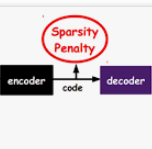In coding theory, codes are usually designed with a certain level of randomness to facilitate analysis and accommodate different channel conditions. However, the resulting random code constructed can be suboptimal in practical implementations. Represented by a bipartite graph, the Batched Sparse Code (BATS Code) is a randomly constructed erasure code that utilizes network coding to achieve near-optimal performance in wireless multi-hop networks. In the performance analysis in the previous research, it is implicitly assumed that the coded batches in the BATS code are independent. This assumption holds only asymptotically when the number of input symbols is infinite, but it does not generally hold in a practical setting where the number of input symbols is finite, especially when the code is constructed randomly. We show that dependence among the batches significantly degrades the code's performance. In order to control the batch dependence through graphical design, we propose constructing the BATS code in a structured manner. A hardware-friendly structured BATS code called the Cyclic-Shift BATS (CS-BATS) code is proposed, which constructs the code from a small base graph using light-weight cyclic-shift operations. We demonstrate that when the base graph is properly designed, a higher decoding rate and a smaller complexity can be achieved compared with the random BATS code.
翻译:暂无翻译



